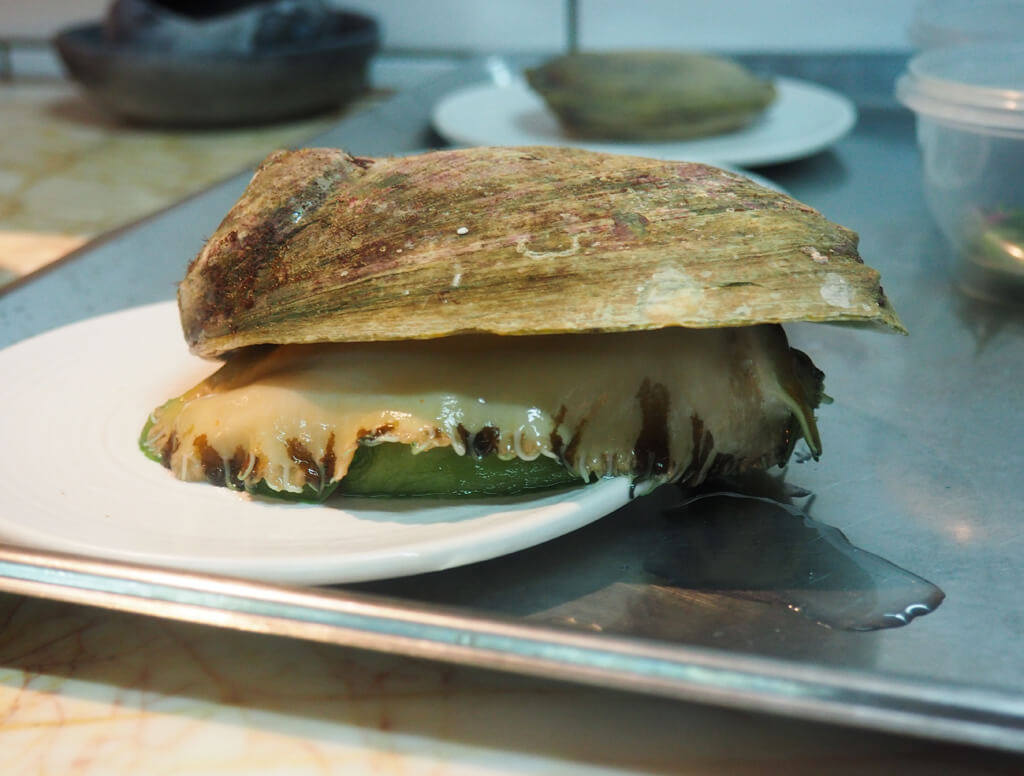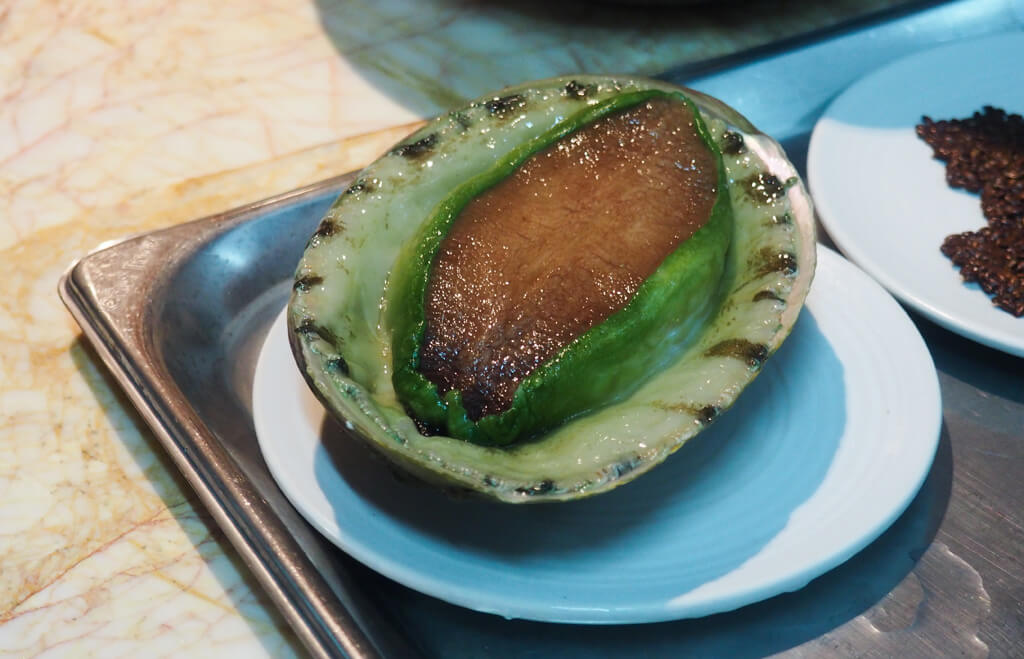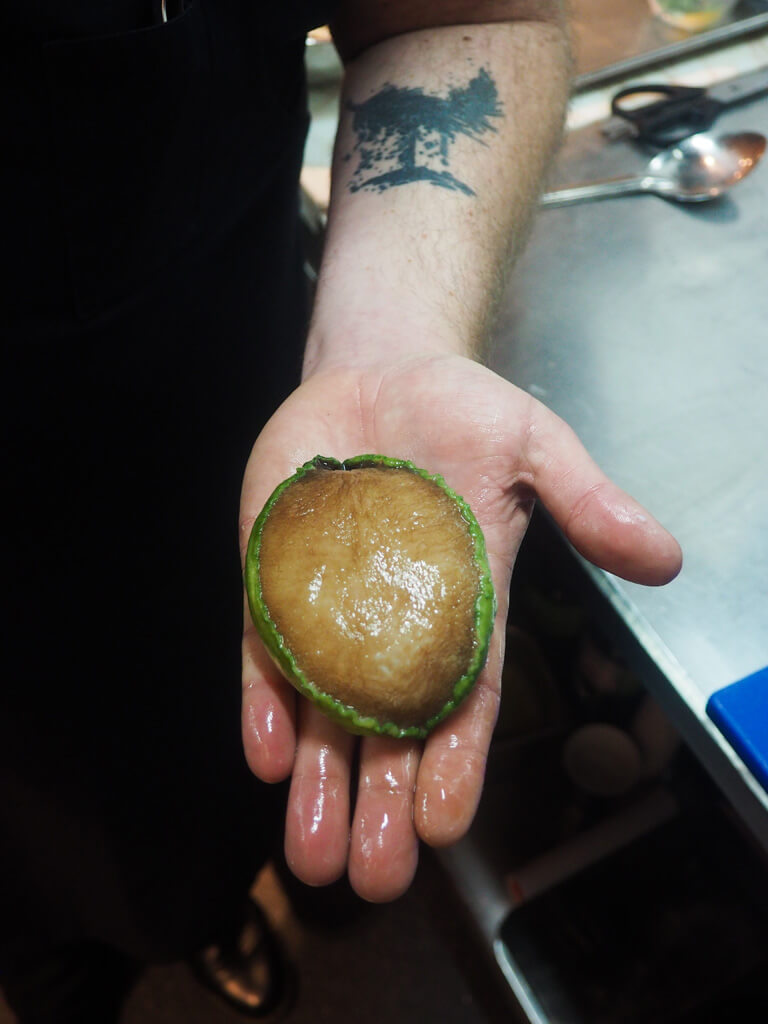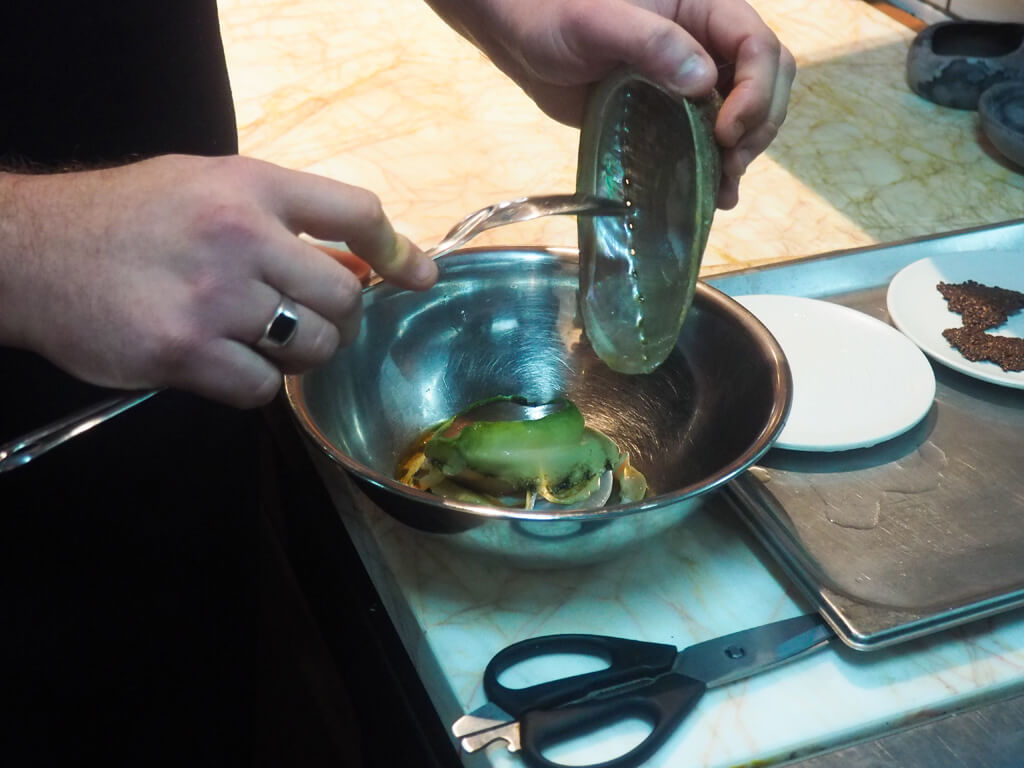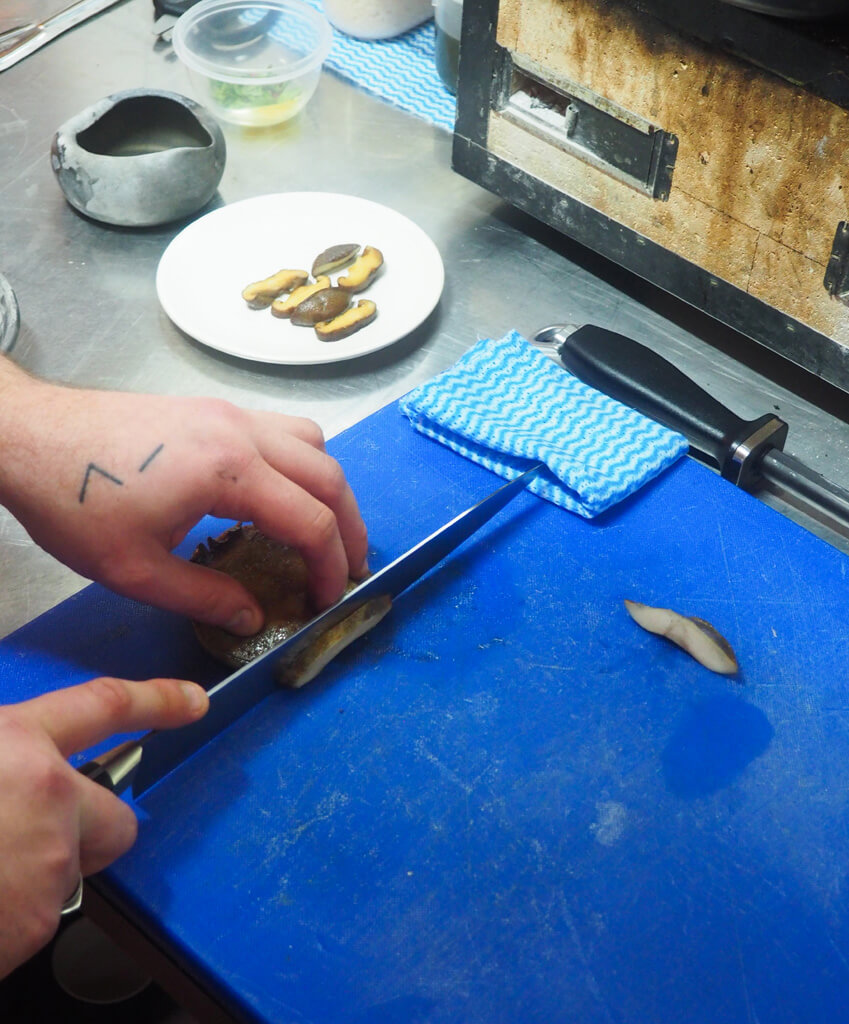Method
Abalone
- Remove the abalone from its shell using a large metal spoon. Trim the innards, liver and skirt from the meat using a sharp pair of scissors.
- Wash the abalone well under cold water to remove any trace of slime and sand.
- Spread the koji paste over the abalone and place into a small vacuum bag. Seal in a vac pac machine on its highest setting then leave the abalone in the fridge for 8 hours to marinate.
- To cook, place the abalone in a water-bath set at 90C for 12 hours.
- Remove from the bath and chill in iced water to bring the internal temperature down to 4C.
- Drain the excess cooking liquor and set aside for the flaxseed.
Shiitake Broth
To prepare the broth, place all the ingredients into a heavy pot and bring to 90C over a medium heat. Simmer at this temperature for 20 minutes before straining the broth through a fine filter. Season with white soy to taste.
Flaxseed Cracker
Mix all the ingredients in a bowl and let stand for 30 mins to thicken. Spread the mixture out thinly over baking paper and place in a dehydrator until crisp and dry. If you don’t have a dehydrator, leave it on the tray on a bench overnight to dry. Break the crisp sheets into smaller pieces. Heat the sunflower oil to 160C and fry the crisps for approx. 10 seconds before draining on paper towel.
To Serve
- Brush the abalone with oil and place on a BBQ fueled with melaleuca (you can use eucalyptus if you can’t find melaleuca) charcoal. Colour the abalone evenly on both sides.
- Just before taking the abalone off of the BBQ, place a handful of fresh melaleuca (or eucalyptus) leaves onto the coals and allow the smoke and flames to engulf the abalone.
- Remove from the BBQ. Carve the abalone into nice thick slices and place into individual serving bowls.
- Garnish the abalone with some sauteed shiitake mushrooms and any available sea succulents* such as samphire, pigs face or sea blite and a small slice of preserved lemon. Gently pour the broth over these ingredients. Serve with the flaxseed crackers on the side.
*Fennel or dill can work as an alternative to sea succulents.


